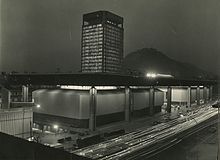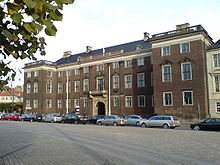Miguel Lawner
He served as executive director of the Corporation for Urban Improvement (CORMU) during the Popular Unity administration of Salvador Allende,[1] until the 1973 coup d'état led by Augusto Pinochet.
[2] Both from abroad and after his return to Chile in the 1980s, Lawner has continued to work in architectural projects with a focus on social interest,[3] as well as investigating and denouncing the human rights violations perpetrated during the dictatorship.
[4] Lawner also served as editorial assistant at AUCA architecture magazine, as national director of the Architects' Association of Chile, and of the NGO Taller de Vivienda Social (a low-income housing workshop).
[citation needed] After the 1973 coup d'état led by Augusto Pinochet, Lawner was arrested and imprisoned at the Military School, where the top leaders of Popular Unity were grouped together.
From there, he was sent to the Dawson Island Concentration Camp, located in the Strait of Magellan, where the prisoners were organized in groups, poorly fed, and forced to do hard labor in sub-zero temperatures.
There, he also managed to faithfully reproduce the drawings of the concentration camps of Dawson Island, Ritoque, and Tres Álamos that he had memorized, which he published in 2003 in his book La vida a pesar de todo.
In 2006, he was commissioned to remodel the mansion at Avenida República 475 in Santiago, a former detention facility of the National Information Center (CNI) that now houses the Museo de la Solidaridad Salvador Allende.
Moreover, they also found a directory showing the telephone numbers of the agents who had been planted in various institutions around the country, such as hospitals, banks, courts of justice, shopping malls, and culture centers.
[citation needed] Miguel Lawner served as president of the Alejandro Lipschutz Science Institute (ICAL) between 1984 and 1989 and as director of Taller de Vivienda Social (TVS) between 1984 and 1992.

